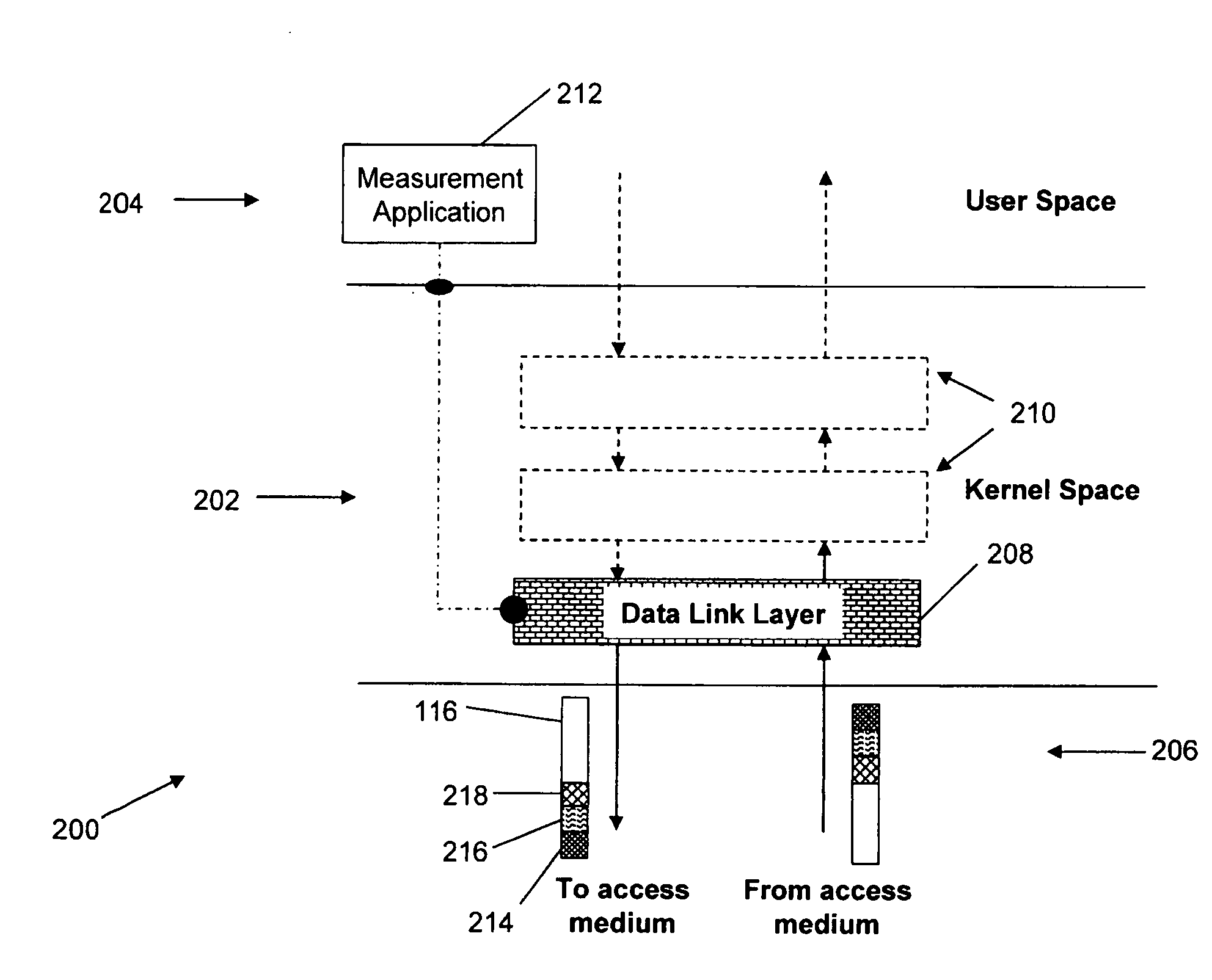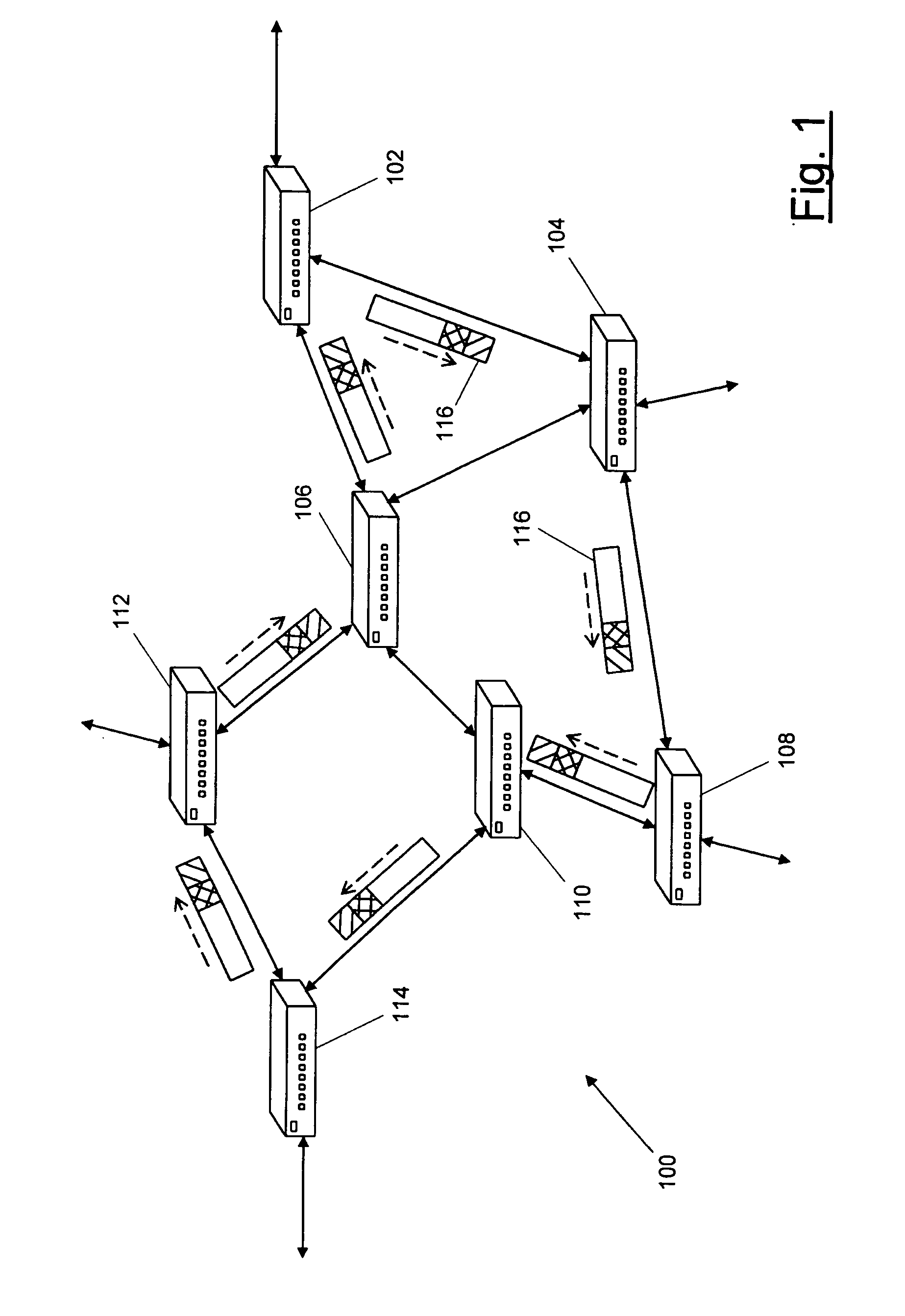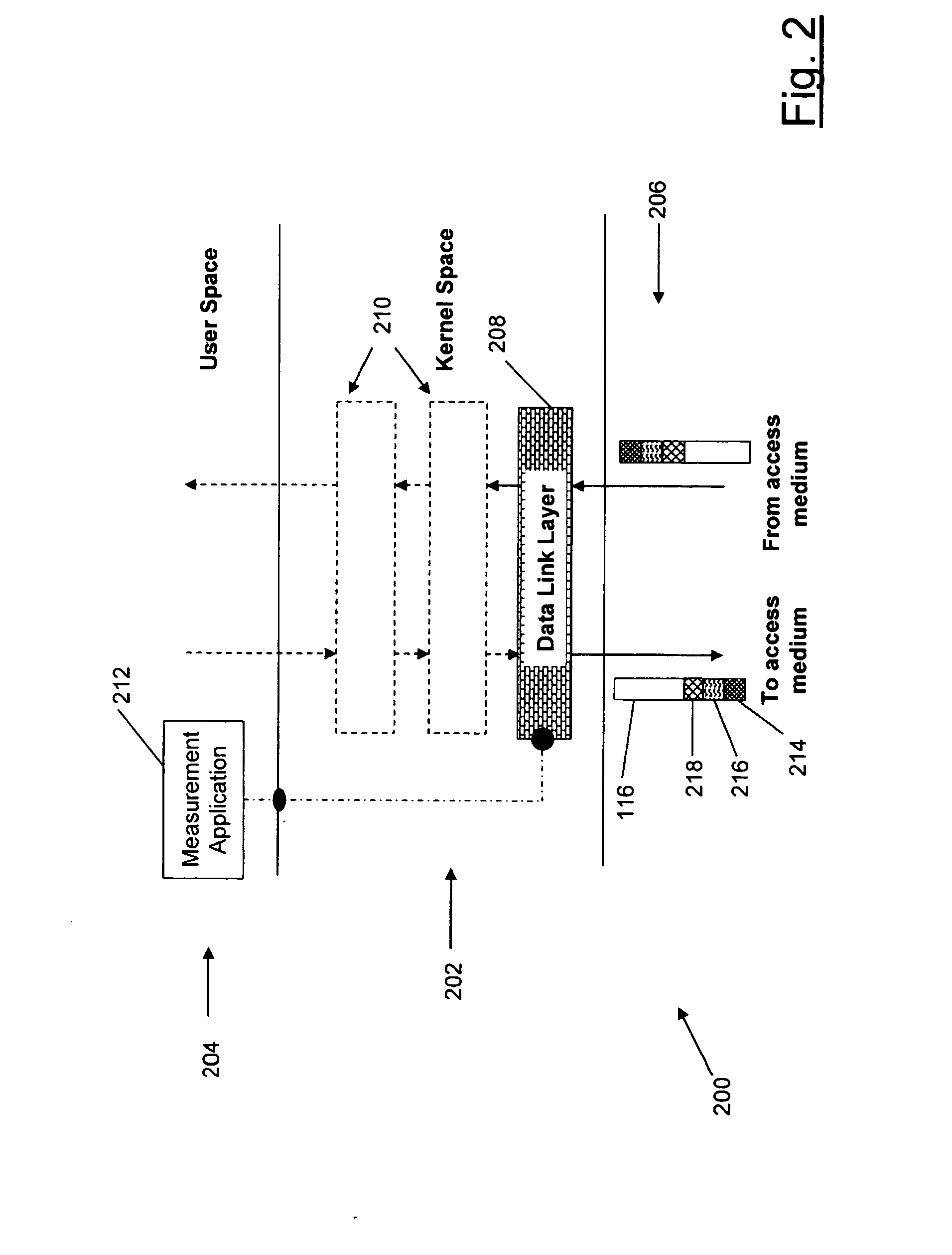Method measuring a delay time metric and measurement system
a delay time and measurement system technology, applied in the field of communication networks, can solve the problems of affecting the performance of some applications, application performance is not good, and the transport-layer protocol is less able to sustain high bandwidth,
- Summary
- Abstract
- Description
- Claims
- Application Information
AI Technical Summary
Benefits of technology
Problems solved by technology
Method used
Image
Examples
Embodiment Construction
[0047] Throughout the following description identical reference numerals will be used to identify like parts.
[0048] Referring to FIG. 1, a part of a communications network 100, for example the Internet, comprises a source node 102 coupled to a first intermediate node 104 and a second intermediate node 106. The communications network 100 is an Internet Protocol (IP) network, in particular an IPv6 network.
[0049] The first intermediate node 104 is coupled to a third intermediate node 108 as well as the second intermediate node 106. Both the second intermediate node 106 and the third intermediate node 108 are coupled to a fourth intermediate node 110, the second intermediate node 106 also being coupled to a fifth intermediate node 112. Both the fourth and fifth intermediate nodes 110, 112 are coupled to a destination node 114.
[0050] Although reference is made herein to “nodes”, the skilled person will appreciate that the nodes can be hosts or routers, or other network elements, depen...
PUM
 Login to View More
Login to View More Abstract
Description
Claims
Application Information
 Login to View More
Login to View More - R&D
- Intellectual Property
- Life Sciences
- Materials
- Tech Scout
- Unparalleled Data Quality
- Higher Quality Content
- 60% Fewer Hallucinations
Browse by: Latest US Patents, China's latest patents, Technical Efficacy Thesaurus, Application Domain, Technology Topic, Popular Technical Reports.
© 2025 PatSnap. All rights reserved.Legal|Privacy policy|Modern Slavery Act Transparency Statement|Sitemap|About US| Contact US: help@patsnap.com



